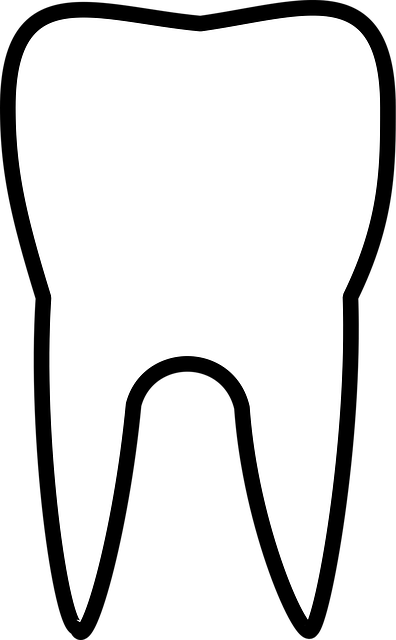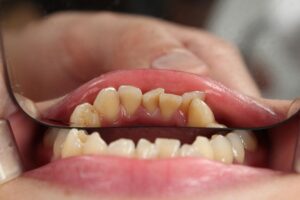Dental malpractice insurance, or dentist liability coverage, is crucial protection for dental professionals against financial risks from patient harm during procedures. It addresses unique challenges like misdiagnosis, treatment errors, and equipment malfunctions, fostering trust with patients. This specialized coverage includes general liability and professional liability, tailored to specific dental practices and updated with evolving legal landscapes. By understanding practice-specific risk factors, adhering to industry standards, and implementing best practices, dentists can select adequate dentist liability coverage to mitigate malpractice claims while prioritizing patient safety and ethical standards.
In the fast-paced world of dentistry, ensuring comprehensive dentist liability coverage is paramount. This specialized insurance safeguards against the unique risks inherent in dental practice, from complex procedures to patient interactions. Understanding the intricate nature of dental malpractice claims and knowing how to mitigate potential risks is crucial for every dentist. This article delves into these critical aspects, offering insights on tailored coverage, risk assessment, claims management, and best practices to navigate this essential realm effectively.
- Understanding Dental Malpractice: The Nature of Dental Procedures and Potential Risks
- Why Specialized Dentist Liability Coverage is Essential
- Key Components of Effective Dental Malpractice Insurance
- Assessing Your Dental Practice's Risk Profile for Insurability
- Navigating the Claims Process: What to Expect and How to Prepare
- Strategies for Mitigating Dental Malpractice Risks: Best Practices for Dentists
Understanding Dental Malpractice: The Nature of Dental Procedures and Potential Risks

Dental malpractice coverage is a crucial aspect of ensuring dentists are protected against potential risks and liabilities inherent in their practice. Dental procedures, while common and often routine, carry inherent complexities and potential for adverse outcomes. Understanding these risks is essential for both dental professionals and patients alike.
Dentists engage in various procedures ranging from simple cleanings to complex surgeries. Each carries its own set of challenges. For instance, errors during anesthesia administration or improper fitting of dental devices can lead to patient harm. Moreover, misdiagnosis, incorrect treatment planning, or post-operative complications can result in significant dentist liability coverage claims. Thus, adequate coverage protects dentists from financial burdens and helps ensure their practice’s longevity.
Why Specialized Dentist Liability Coverage is Essential

In the dynamic field of dentistry, where precision and expertise are paramount, specialized dentist liability coverage acts as a crucial shield against potential risks and financial vulnerabilities. General liability insurance often falls short in addressing the unique challenges faced by dental professionals. Procedures like complex surgeries, use of advanced equipment, and interaction with patients’ sensitive oral health require tailored protection.
Malpractice claims can arise from various sources, including errors in diagnosis, treatment mishaps, or even omissions. Specialized coverage ensures that dentists are protected against these potential liabilities, enabling them to focus on delivering quality care without the constant burden of financial risk. It fosters a safe environment for both dental practitioners and their patients, ultimately enhancing patient trust and satisfaction.
Key Components of Effective Dental Malpractice Insurance

Effective dental malpractice insurance is a cornerstone for any practicing dentist, protecting against potential liabilities and ensuring career security. Key components include comprehensive general liability coverage to safeguard against claims of negligence or injury during dental procedures. This should be complemented by professional liability insurance, which specifically addresses errors or omissions in dental care, including misdiagnosis, improper treatment plans, and equipment malfunctions.
Additionally, dentists should consider practices-specific policies that cater to the unique risks of their work, such as coverage for dental implants, orthodontics, or cosmetic procedures. Dental malpractice insurance should also include adequate limits and a clear understanding of exclusions, ensuring sufficient protection against potential financial burdens. Regular reviews and updates are crucial to align coverage with evolving legal landscapes and the ever-changing dynamics of dental practice.
Assessing Your Dental Practice's Risk Profile for Insurability

When it comes to selecting the right dentist liability coverage, understanding your practice’s unique risk profile is paramount. This involves a comprehensive assessment of various factors that can influence the potential for claims and lawsuits. Dentists should consider their level of experience, the complexity of procedures they perform, patient demographics, existing health conditions, and adherence to industry standards. For instance, a general dentist treating primarily pediatric patients may face different risks compared to an orthodontist specializing in complex treatments.
Regularly reviewing your practice’s history, patient feedback, and compliance records is essential. Identifying areas where mistakes or accidents are more likely to occur can help tailor insurance policies accordingly. Additionally, staying updated with industry regulations and guidelines ensures that your practice meets the necessary standards, reducing potential liability risks. By thoroughly evaluating these aspects, dentists can make informed decisions when choosing dentist liability coverage, ensuring they have adequate protection for their specific needs.
Navigating the Claims Process: What to Expect and How to Prepare

Navigating the claims process is a crucial aspect of managing risk under your dentist liability coverage. When faced with a potential claim, understanding what to expect can significantly reduce stress and help streamline the resolution. The first step involves acknowledging the situation and gathering all relevant information related to the incident. This includes patient records, treatment notes, and any communication that occurred before, during, or after the procedure in question.
Preparation is key to managing potential claims effectively. Dentists should establish clear protocols for handling complaints and adverse events, ensuring that every member of their team is trained to respond promptly and professionally. Regular reviews of your dentist liability coverage policy, including an understanding of exclusions and limitations, will empower you to make informed decisions during this process.
Strategies for Mitigating Dental Malpractice Risks: Best Practices for Dentists

Dentists, like any healthcare professionals, face unique risks associated with their practice. Implementing robust strategies for mitigating dental malpractice risks is essential to protect both patients and practitioners. Best practices include staying up-to-date with the latest clinical guidelines and evidence-based procedures, ensuring thorough patient consent processes, maintaining detailed records, and regularly reviewing cases with peers or professional organizations. These measures can significantly reduce errors and improve patient outcomes, thereby lowering the likelihood of malpractice claims.
Additionally, obtaining adequate dentist liability coverage is crucial for financial protection against potential lawsuits. Understanding the scope and limitations of your insurance policy is vital. Regularly reviewing and updating your coverage to align with changes in practice settings, new equipment, or evolving legal landscapes ensures that you have the appropriate dental liability coverage in place. This proactive approach not only safeguards your assets but also demonstrates a commitment to patient safety and professional ethics.
